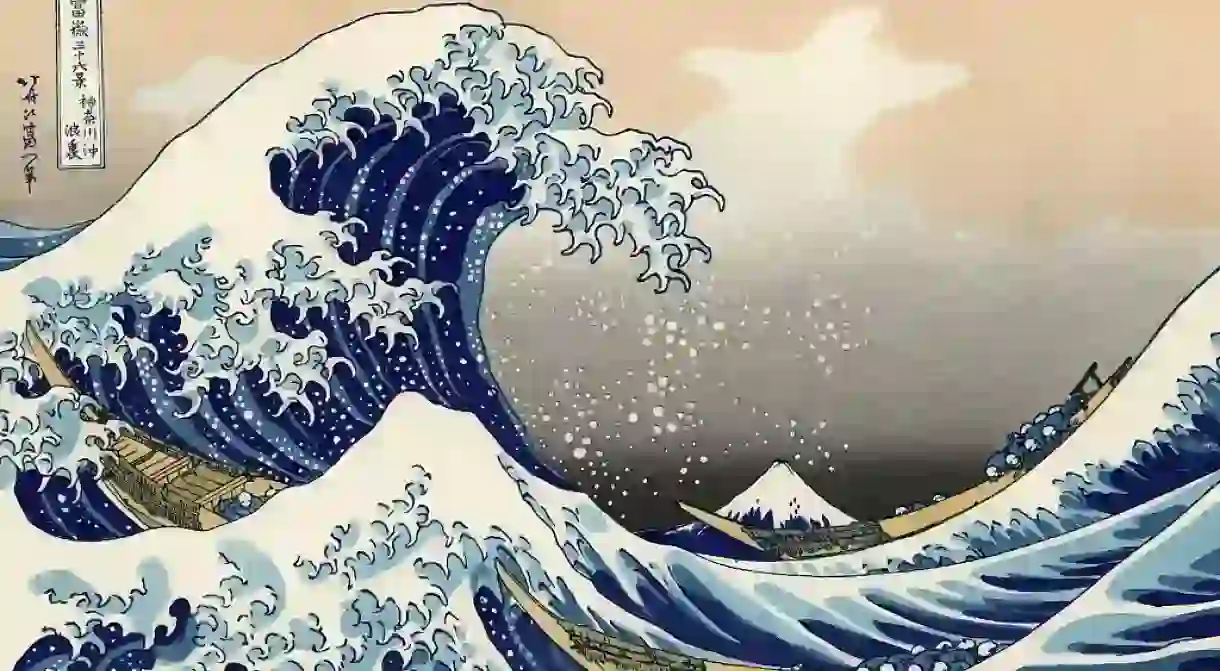A Brief History Of 'The Great Wave': Japan's Most Famous Artwork

The Great Wave off Kanagawa, also known as The Great Wave, is one of the most famous examples of Japanese art in the world. Hiroe Nirei discusses some of the studies written about the iconic image.
Fancy a trip to the land of the rising sun? Take a look at these bookable tours, trips and experiences in Japan before you set off and make your trip an unforgettable one.
The energetic and imposing picture The Great Wave (Kanagawa Oki Nami Ura) is the best-known work by Japanese artist Hokusai Katsushika (1760-1849), one of the greatest Japanese woodblock printmakers, painters and book illustrators. The Great Wave was created around 1831 as part of a series of woodblock prints called Thirty-six Views of Mount Fuji (Fugaku Sanju-roku Kei). Hokusai (2004), a book written by the Italian professor of East Asian Art, Gian Carlo Calza, offers a general introduction to Hokusai’s works, looking at a chronologically arranged overview of his life and career. The collection of monographs by distinguished Western and Japanese scholars display’s wide research and keen discernment of present studies on Hokusai, while the abundant illustrations, amounting to over 700 in total, allow the readers to explore the fascinating world of Hokusai.
The most eye-catching feature of the painting is the extended wave as it is about to break with the crash of its claw-like crest. The beautiful dark blue pigment used by Hokusai, called Prussian Blue, was a new material at the time, imported from England through China. The wave is about to strike the boats as if it were an enormous monster, one which seems to symbolise the irresistible force of nature and the weakness of human beings.
In the print, Hokusai conceived the wave and the distant Mount Fuji in terms of geometric language. The curator at the Bibliothèque Nationale de France, Jocelyn Bouquillard, outlined Hokusai’s development of landscape prints, technical skills and creating processes in Hokusai’s Mount Fuji: The Complete Views in Colour. The book provides several statements about how Japanese culture and historical events influenced Hokusai’s creations as well as how he has been internationally perceived by the Western arts world. This informative book is a great guide to a deep appreciation of Hokusai’s art.
The 39cm x 26cm small woodblock print portrays two contrasting aspects of existence. The wave in the foreground and Mount Fuji in the background are symbols chosen not only to provide a perspective effect, a European-style technique he had adapted in a very inventive way, but also to represent the unpredictability of life. Mount Fuji, on the other hand, signifies stillness and eternity; it is the symbol of Japan and, as a sacred object of worship, holds a significant place in Japanese beliefs.
Edmond De Goncourt, the author of Hokusai (2009), discusses how the unique artistic expression of Hokusai has influenced European artists since the middle of the nineteenth century. Prints began to circulate widely through Europe and The Great Wave became a source of inspiration for a variety of artists. including the Dutch post-impressionist painter Vincent van Gogh and the French impressionist composer Claude Debussy.
At the beginning of the 17th century, circa 1639, Japan had sealed itself off from the rest of the world and any contact with Western culture was forbidden. Fortunately today, this masterpiece, borne within Japan’s isolation, can be appreciated and admired throughout art exhibitions all over the world. Copies of the print are held in several Western institutions, including the Metropolitan Museum of Art in New York, the British Museum in London, the Art Institute of Chicago and the National Library of France.













